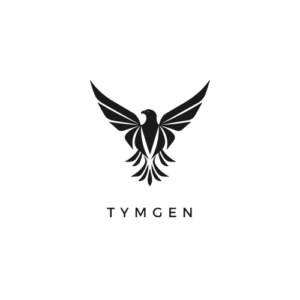Introduction

Content marketing businesses connect with people by sharing useful information Imagine you have a friend who always gives you good advice, tips, or stories that help you solve problems or learn something new. That’s what content marketing does. Businesses create things like blog posts, videos, social media updates, or even podcasts to provide valuable information to their audience.
The goal is to attract the right audience—people who are interested in what the business offers—and keep them engaged. Over time, as people keep coming back for more helpful content, they start to trust the business.
Different Types of Content for Marketing
- What is Content Marketing?
A brief explanation of content marketing and how it has evolved.
Introduction to how new content types and platforms are changing the landscape of content marketing. - Why Are Different Types of Content Important?
Discuss how using various types of content can reach broader audiences, cater to different preferences, and increase engagement.
Mention that exploring new forms of content is key to staying competitive in the ever-changing digital world.
Traditional Types of Content for Marketing
- Blog Posts
- Explain the role of blogs in content marketing.
- Talk about how they help businesses provide value, answer common questions, and rank in search engines through SEO.
- Videos
- Discuss how videos are a powerful tool to engage audiences.
- Mention how platforms like YouTube and TikTok make it easy to share visual content and attract attention.
- Infographics
- Explain how infographics can present complex information in a simple, visual way that’s easy to understand.
- Highlight their shareability on social media and blogs.
- Social Media Posts
- Discuss the importance of social media for engaging directly with audiences.
- Talk about how frequent posts on platforms like Facebook, Instagram, and Twitter help build brand awareness.
- Ebooks and Whitepapers
- Introduce long-form content like ebooks and whitepapers that provide in-depth insights.
- Mention that these are often used as lead magnets in exchange for contact information.

The New Frontier in Content Marketing
- Podcasts
- Explain the rise of podcasts and how they allow brands to have meaningful conversations on industry topics.
- Interactive Content
- Discuss quizzes, polls, and surveys as forms of interactive content that engage the audience and provide personalized results.
- Explain how this type of content boosts user interaction and generates valuable data.
- Webinars and Live Streams
- Explain how they allow businesses to share knowledge, answer questions, and connect with audiences directly.
- Introduce the growing use of AR and VR in content marketing, where users can try products virtually or experience interactive environments.
- Explain how this immersive content is redefining customer engagement and providing a unique experience.
Choosing the Right Type of Content for Your Business
- Know Your Audience
- Stress the importance of understanding what type of content your audience prefers.
- Provide tips on researching and analyzing audience behavior to select the right content format.
- Align Content with Your Goals
- Explain how each type of content serves different purposes.
- Encourage businesses to choose the content that aligns best with their specific goals.
- Experiment with New Types
- Encourage experimenting with newer forms of content to stay ahead of competitors.
- Mention that adapting to trends, like interactive content or podcasts, can expand reach and keep the audience engaged.

Developing a Content Marketing Strategy
- What is Content Marketing Strategy?
A brief explanation of what a content marketing strategy is and why it’s important for businesses to succeed in the digital world. - Why Content Marketing is Evolving
Introduce the idea that content marketing strategies are evolving with new types of content, platforms, and audience behaviors.
Mention that to stay competitive, businesses must explore these new frontiers.
Traditional Approaches to Content Marketing Strategy
- Blog-Based Strategies
- Discuss how blogs have been a foundation of content marketing for years.
- Mention the importance of SEO, consistent posting, and delivering value through written content.
- Social Media Strategies
- Talk about how businesses have traditionally used platforms like Facebook, Twitter, and Instagram to build brand awareness and engage with their audience.
- Explain the importance of scheduling regular posts and tailoring content to the platform.
- Video and Visual Content Strategies
- Describe how video marketing through platforms like YouTube and short visual content on Instagram and TikTok have been widely used.
- Mention how videos help explain products, tell stories, and engage with the audience in a more dynamic way.
- Email Marketing
- Explain the role of email newsletters in maintaining customer relationships and generating leads.
- Discuss the importance of creating personalized, valuable content in email strategies.
The New Frontier in Developing a Content Marketing Strategy
- Podcasts and Audio Content
- Introduce the growing popularity of podcasts and explain how audio content allows businesses to connect with audiences on the go.
- Discuss how podcasts fit into a modern content strategy by offering long-form, engaging conversations or interviews.
- Interactive Content Strategies
- Talk about how interactive content like quizzes, polls, surveys, and calculators can increase audience engagement and provide personalized experiences.
- Mention the potential of interactive content to capture leads and collect valuable customer data.
- Webinars, Live Streaming, and Virtual Events
- Highlight the importance of live, real-time interactions through webinars and live streams, which allow businesses to educate and connect with their audience in a direct way.
- User-Generated Content (UGC)
- Discuss how businesses are increasingly using user-generated content, like customer reviews, testimonials, or social media posts, to build trust and authenticity.
- Mention how UGC can enhance brand loyalty and community engagement.
- Augmented Reality (AR) and Virtual Reality (VR)
- Introduce the use of AR and VR as immersive content experiences in content marketing.

How to Incorporate New Types of Content Into Your Strategy
- Assess Your Audience’s Preferences
- Explain the importance of understanding where your audience spends time online and what types of content they prefer
- Provide tips on how to use surveys, analytics, and social listening to gather insights into audience behavior.
- Align New Content Types with Business Goals
- Discuss how businesses should align content types with specific goals
- Give examples of matching content types to goals generation or interactive content for engagement).
- Experiment and Adapt
- Encourage businesses to experiment with different types of content, measure results, and adapt their strategy based on what works best.
- Mention the importance of tracking metrics and adjusting content efforts to maximize impact.
Case Studies of Successful Strategies Using New Content Types
- Podcast Strategy Example
- Provide an example of a business that successfully integrated podcasts into their content marketing strategy and explain the results.
- Interactive Content Success Story
- Share a case study of a brand using quizzes or polls to drive engagement and generate leads, highlighting how interactive content boosted their marketing efforts.
- Virtual Event or Webinar Success
- Showcase a company that leveraged webinars or virtual events as part of their content strategy, discussing how it helped generate leads or educate their audience.
Measuring Content Marketing Success
Key Metrics for Measuring Content Marketing Success
- Website Traffic
- Explain how the number of visitors to a website is a basic yet important metric.
- Highlight how tools like Google Analytics can track total visits, page views, and time spent on the site.
- Engagement
- Discuss metrics like likes, shares, comments, and clicks on social media and blog posts.
- Mention that engagement shows how interested people are in the content and how well it resonates with the audience.
- Conversion Rates
- Define conversion rates as the percentage of visitors who take a desired action, like signing up for a newsletter or making a purchase.
- Explain that this metric directly ties content to business goals and sales.
- Lead Generation
- Talk about how content like ebooks, whitepapers, or webinars can help capture leads by collecting email addresses or contact information.
- Mention tools like forms and landing pages for tracking how many leads are generated from specific content pieces.
- SEO Performance
- Discuss the importance of tracking keyword rankings, organic search traffic, and backlinks.
- Explain how improving SEO performance can drive long-term traffic through content optimization.
Tools for Measuring Content Marketing Success
- Google Analytics
- Explain how Google Analytics is a powerful tool for tracking website traffic, user behavior, and conversions.
- Mention how it provides detailed insights into where visitors are coming from and what content they engage with most.
- Social Media Analytics
- Talk about how platforms like Facebook Insights, Instagram Analytics, and Twitter Analytics offer detailed metrics on post engagement, reach, and audience demographics.
- Highlight that these tools can help optimize social media content by understanding what works best.
- Email Marketing Tools
- Discuss tools like Mailchimp or HubSpot that track email open rates, click-through rates, and conversions.
- Mention how these insights can help improve email campaigns and lead generation efforts.
- SEO Tools
- Introduce tools like SEMrush, Ahrefs, or Moz for tracking keyword rankings, backlinks, and organic traffic.
- Explain how these tools help improve content visibility and effectiveness over time.
Best Practices for Measuring Content Marketing Success
- Set Clear, Measurable Goals
- Encourage businesses to use SMART (Specific, Measurable, Achievable, Relevant, Time-bound) goals.
- Track the Right Metrics for Your Goals
- Regularly Review and Adjust Your Strategy
- Talk about the importance of reviewing content performance on a regular basis.
Focus on Long-Term Growth
- Remind readers that content marketing is a long-term strategy.
Case Studies of Measuring Content Marketing Success
- Blog Content Success
- Share an example of a business that used blogs to increase website traffic and how they tracked performance using Google Analytics.
- Provide a case study of a brand that improved social media engagement by measuring likes, shares, and comments.
- Explain how analyzing these metrics helped them refine their content strategy.
- Lead Generation Success
- Offer a case study of a company that used webinars or ebooks to generate leads.
- Highlight how they tracked conversions and lead capture to measure success.
Conclusion
Summarize the key metrics and tools used to measure content marketing success and why it’s important to track them regularly. Briefly discuss how content marketing measurement will continue to evolve with new tools and technologies. Encourage readers to start tracking their content marketing efforts today using some of the key metrics and tools mentioned in the blog, and remind them that success comes from analyzing data and adjusting strategies over time.








